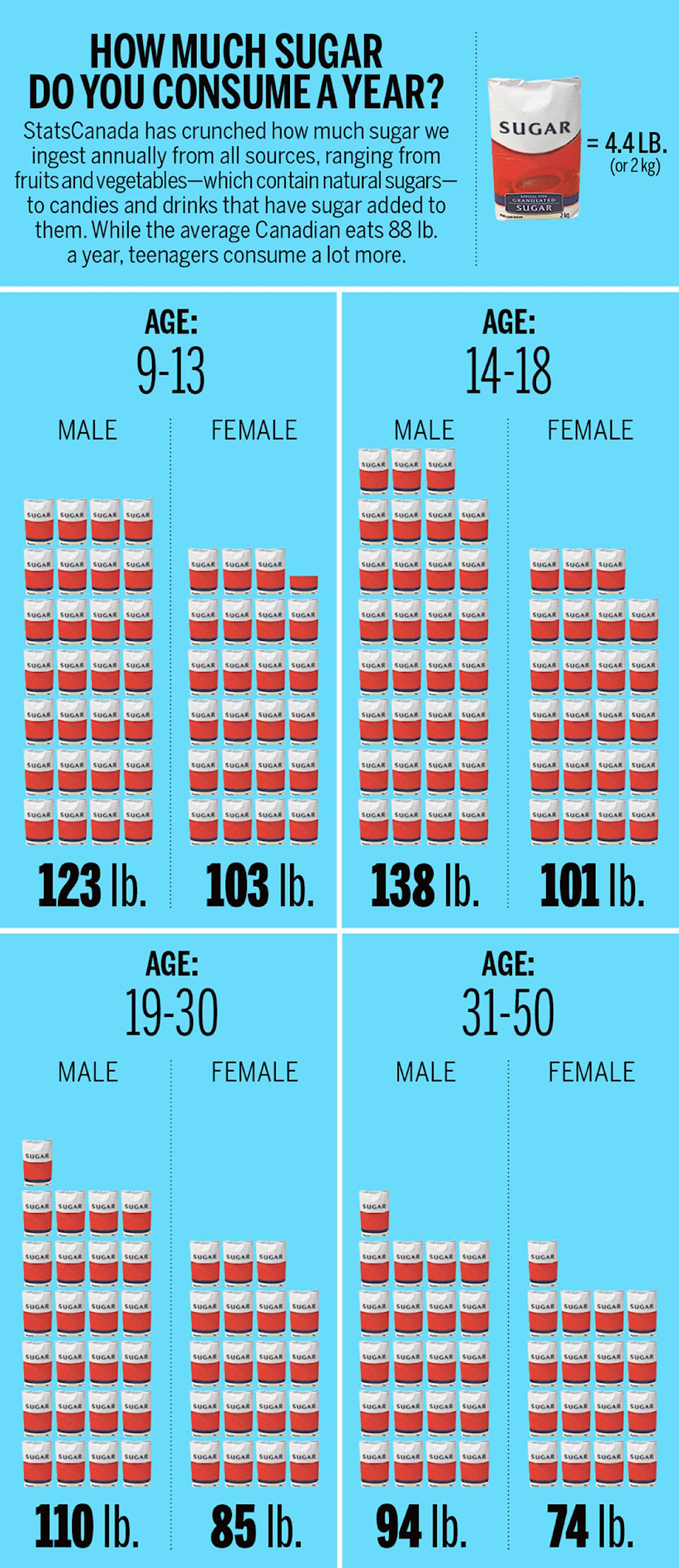We all know treats are full of sugar, hence the name treats. But we often get fooled by some foods into thinking they are healthier for us than they actually are.
Taking a closer look at what types of food contain higher amounts of sugar and how food is broken down and absorbed within our bodies is the key to understanding just how much sugar you are actually consuming.
Breads, cereals, grains, starches and fruits are all examples of carbohydrates. These are generally the foods that we are recommended to watch when we are advised to decrease our sugar intake and start counting our carbs.
There are some foods, however, that can fool us into thinking they are not also a carbohydrate because they contain good fats and proteins as well. An example of these foods is yogurt and milk. Most Canadians choose to eat low fat, sweetened yogurt because we have been told to watch our fat intake for years and the fruity versions are yummy.
Yogurt is believed to be a healthy choice. Don’t get me wrong, yogurt does have high amounts of protein and good fats, if you choose the full fat version like Greek yogurts, but when sweetened, like strawberry flavour, a 100-gram portion of yogurt has anywhere from 11 grams to 15 grams of sugar depending on the brand.
If we compare the same size, 100- gram portion, with Barqs root beer ,we would find that the root beer has 11 grams of sugar also! The difference is the root beer has empty calories, meaning there isn’t much else of nutritional value in it and the yogurt will still provide you with some other nutritional benefits like calcium and protein. However, if you choose Greek yogurt the amount of protein in it is much higher and generally the sugar content is lower as well.
Because carbohydrates contain the same ratios of hydrogen and oxygen as water, they can be broken down quickly by being turned into glucose (sugar) and used to create energy fast and efficiently. This process will spike our blood glucose levels which at times affects our energy negatively, also known as a sugar rush and a carb crash.
You consume the carb, have a sugar rush and then crash shortly after. Vegetables also are a carbohydrate, but the high amounts of fiber help the body break them down a lot slower and they are nutritionally dense food. Proteins are harder for our bodies to metabolize so they sustain us for a lot longer. This is why when consuming carbs it is best done with a good amount of protein as well to help regulate those huge spikes in glucose levels within our blood.
When I started tracking my sugar intake I was amazed at the amount I was consuming. I thought because I did not eat a lot of processed foods and treats I wasn’t consuming a lot of sugar.
But when I started reading labels more and researching the nutritional value of different foods I realized I was wrong. Weight Watchers and My Fitness Pal are free ways to see just what is in the food you are eating. My Fitness Pal has an app you can put on your phone and actually scan the label of the food to learn what is in it.
Root vegetables like beets and carrots, starches like yams and potatoes, tropical fruits and alcohol all have a lot of sugar in them. Yes, it is naturally occurring, but it is still sugar. Too much of it and your body’s natural yeast will go out of whack, your energy levels will be affected, and some people suffer from constant bloating and migraine headaches.
If you find that you are eating too much sugar, start taking a probiotic to help the good flora, bacteria, in your gut which will aid your digestion bringing the yeast back into balance. Then you can start to cut out some of those culprit foods. Take your time when making these changes as it will be hard on your system to adjust and if done too quickly you will feel like you have the flu.
My Fitness Pal will also calculate the recommended daily nutritional amounts for you and by tracking what you are eating for a week you will gain a good picture of your daily nutritional intake habits and help you make the necessary adjustments.
I am always happy to answer questions you may have around this, too. Email me: info@misfitstudio.ca questions you may have.
(Chemainus resident Nicole Cournoyer is a BCRPA certified Personal Trainer, Group Fitness Instructor and RYT 200 Level Yoga Teacher).
